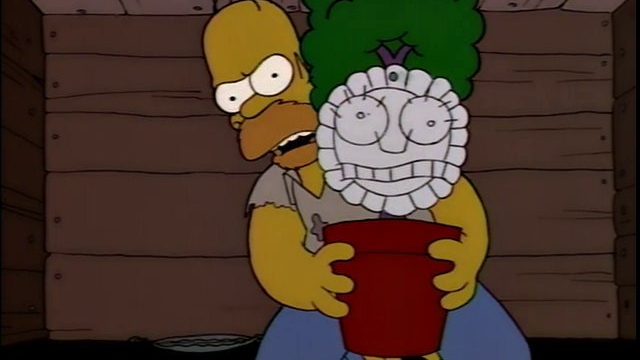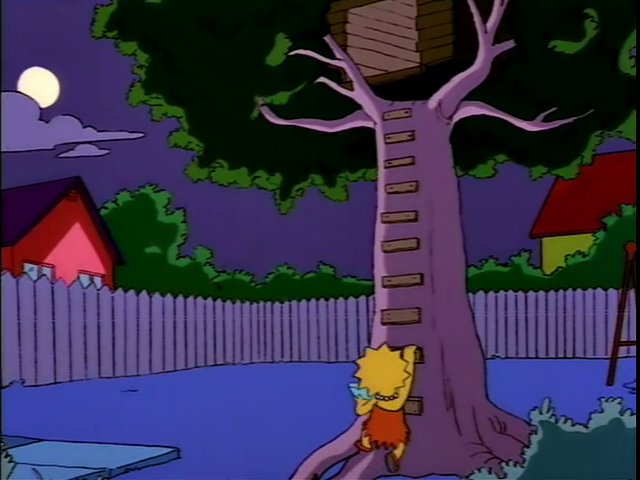
The scene opens with a wide shot, establishing location. We can see how tall the tree is – that will factor into a joke later. Lisa enters from our left, carrying a bowl. The eerie purple and blue conveys the feeling of night-time as much as the reality. When she’s about halfway up the tree, we cut to the next shot – we can mentally fill in that she’s climbing the rest of the way.
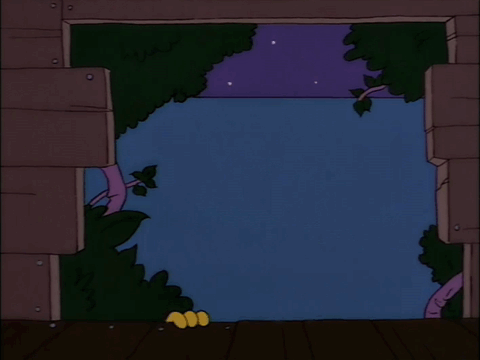
Midshot of Lisa. She’s looking down at the pudding as she talks about it so that she can be surprised to see whatever Homer is doing. This dedication to plausibility of character is what makes The Simpsons even funnier than its writing. A quick zoom in on her face emphasises her shock. I also love the tongue waggling.
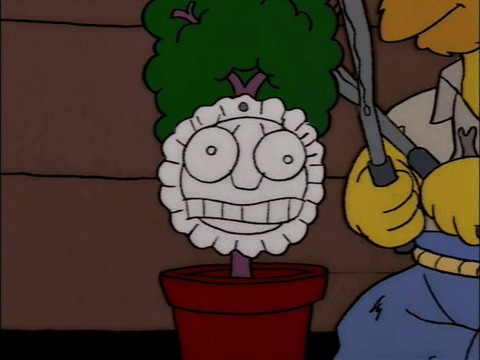
POV from Lisa’s perspective. It happens to mirror the shot of her – starting with a close-up and zooming out to a mid-shot – and that creates a kind of musical effect, but that feels like a side effect of showing where her attention is drawn – she’s looking at the plant first and then up at Homer. We only really work out exactly what we’re looking at when we see Homer contextualising the shot – ah, he combined a paper plate and a plant to look like Marge. The face on the paper plate looks like it’s grimacing; the plant is apparently not enjoying this, and it makes Homer look like a bad (or possibly just desperate) artist.
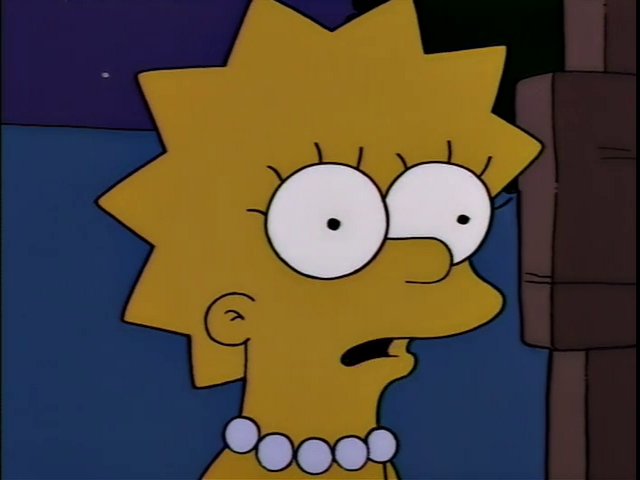
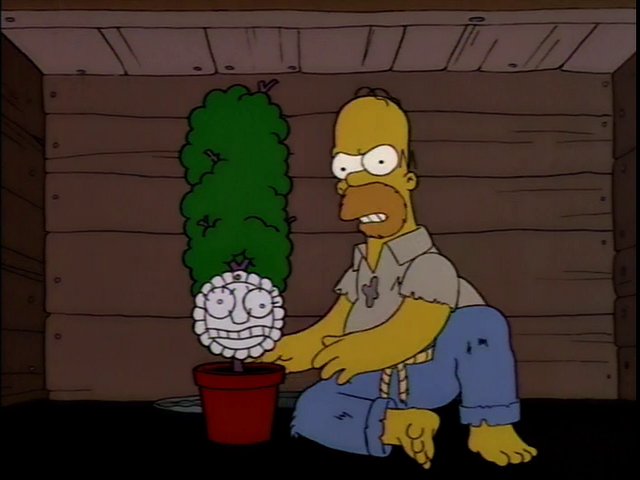
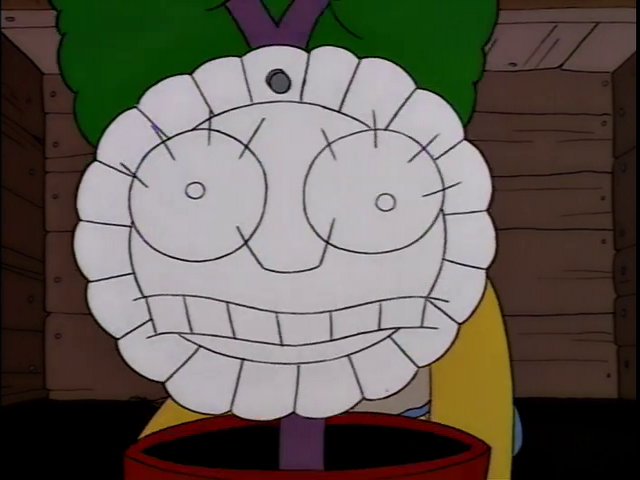
We cut to an intimate closeup of Lisa as she speaks, then back to a POV shot. We are Lisa, and Homer is shoving the plant in our face. Lisa is also drawn with simple expressions, making her even easier to identify with as the rational actor.
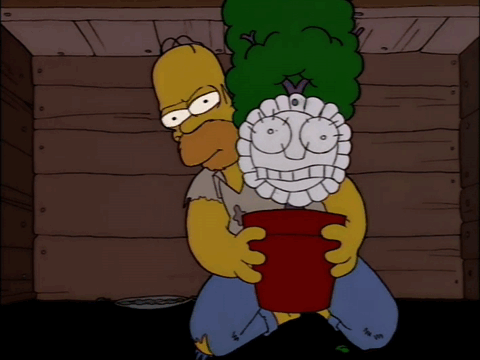
I want to show this sequence in motion first, because I like the way it’s cut together. Cutting on the motion of the plant and keeping it in the near-centre of the frame makes the action feel more elegant – and thus funnier, because Homer is making a mistake.
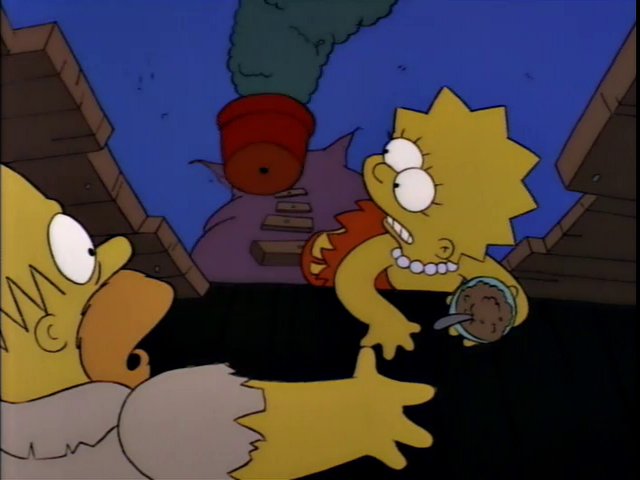
This shot puts us in the heads of both Homer and Lisa. We can see how high the treehouse seems from here, and we can see Lisa grimacing and Homer’s shock. She’s cringing because she knows this will upset him even if it’s not that bad; he’s simply befuddled.
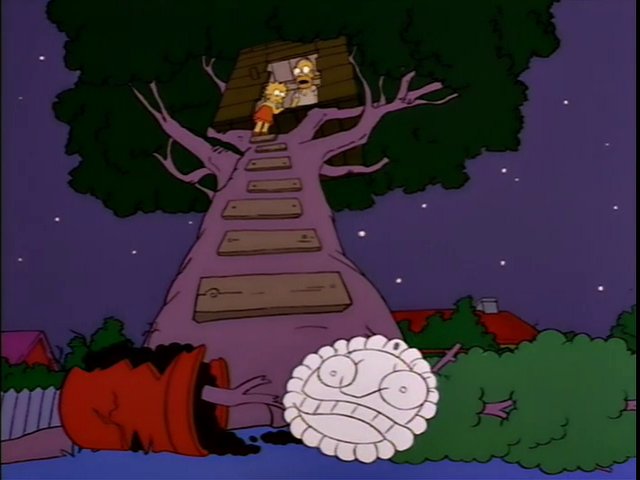
This reverses the previous shot – still emphasising the height of the tree, but now Homer and Lisa look small and weak and powerless. Two extra details make this next level: the tree deflates slightly, and Homer moves further into the shot. For the former, it’s not terribly realistic but it makes the plant’s ‘corpse’ look even more dead. For the latter, Homer already looks pretty funny with that bug-eyed terror; his movement both draws attention to him and implies that he’s trying to lean over to look. He really believes that plant is a real person.
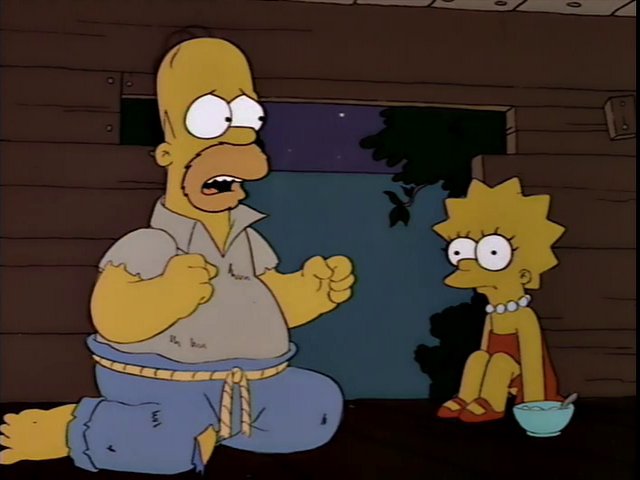
The scene shifts to a more functional setup as Lisa manages to get control of the situation; Lisa, Homer, and the pudding are all in the same shot because she’s about to placate him with it.
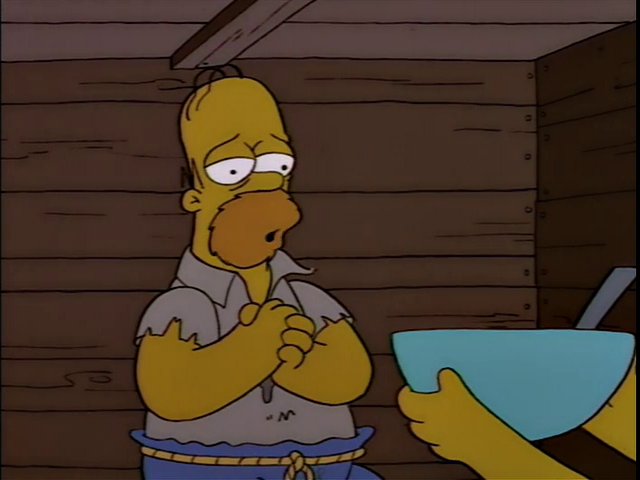
I love this shot. One can understand why Homer would be placated by the seemingly huge pudding.
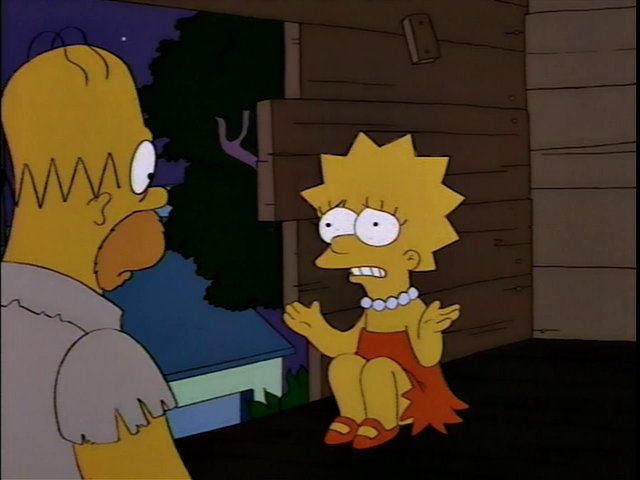
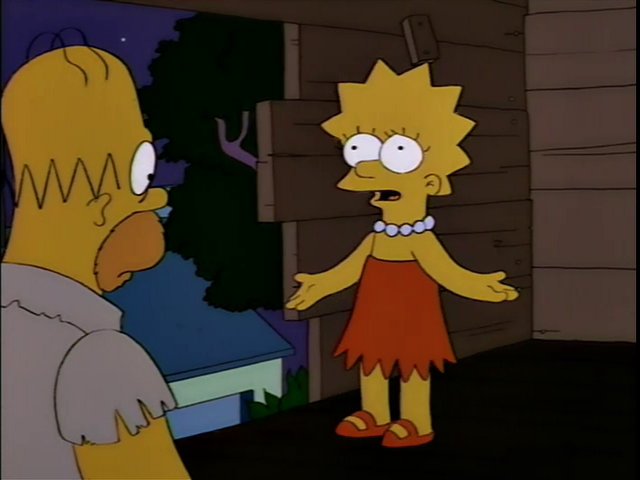
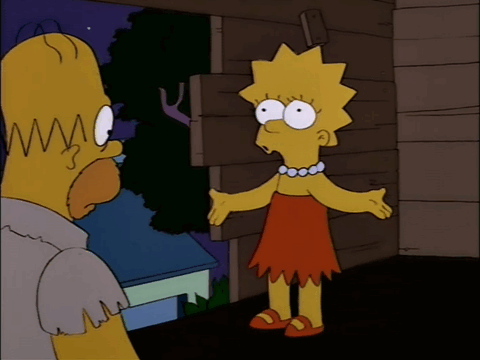
Lisa stands up to emphasis her point and we zoom in because she’s grabbing our attention, even following her as she moves because what she’s saying is that important.
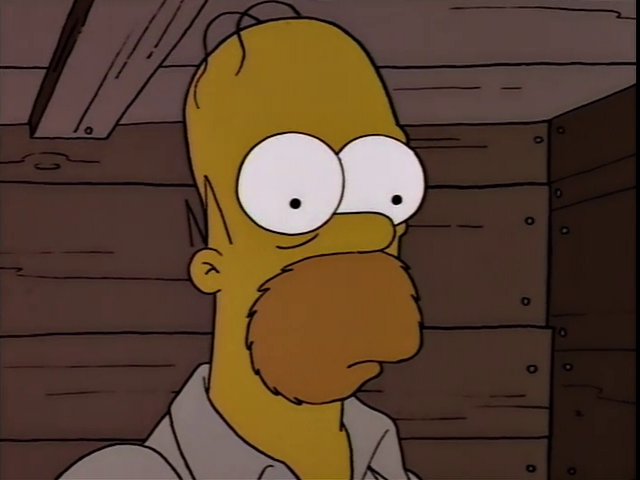
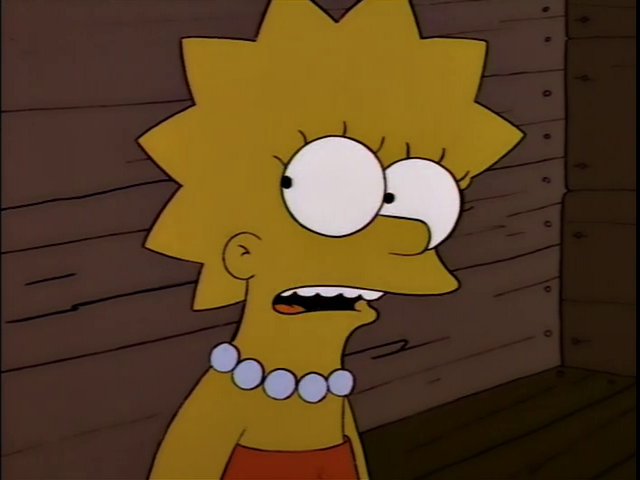
As she speaks, we cut to a closeup of Homer, visibly confused but intently listening.

Lisa ends with a challenge to her father – the crucial lynchpin of the scene.
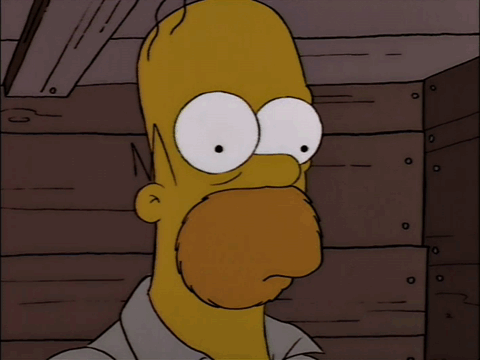
Homer pauses exactly long enough to have time to think of exactly the wrong response.
“Secrets Of A Successful Marriage” was directed by Carlos Baeza.

